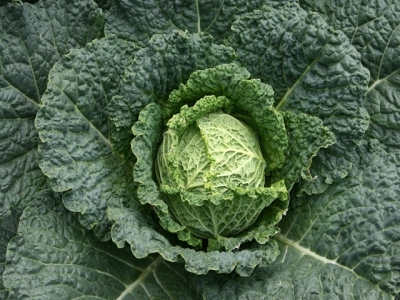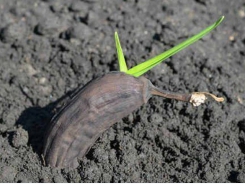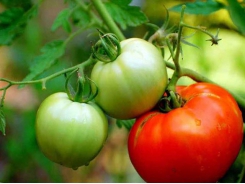Guide to Growing Cabbages

Cabbage – Brassica oleracea
The wild or sea cabbage is the ancestor of the present day forms of heading cabbage which is now recognised as Brassica oleracea var. capitata. Cabbages can still be found growing wild in many Mediterranean regions as well as on the southern coastal areas of the British Isles. Intensive breeding programmes over many years, have given us the varieties we know so well.
Cabbages contain a fair amount of vitamin C with smaller quantities of vitamins A and B and also calcium and iron. They are usually divided or classified as –
- spring cabbage,
- summer and autumn cabbages,
- winter varieties, including savoys.
Botanically the savoy is Brassica oleracea var. bullata major and it originated in Savoy in France.
Guide to Growing Cabbages Cabbages should be sown in prepared seed beds. Make the drills 18 mm deep and 20 to 23cm apart. This makes it easy for weeding before the seedlings are ready for transplanting. Do not leave the plants too long in the seed bed or they may become thin and drawn with a poor root system. Lightly firm the soil after sowing. This assists germination and breaks down lumps which might provide cover for flea beetles.
Where possible spring maturing sorts should be grown on light soil. This warms up quickly and encourages rapid development. If cabbages follow a well manured crop such as peas or beans there will be sufficient bulk in the soil.
If humus is not present it will pay to work in decayed manure, compost or similar material. In the absence of any of these bulky types of manures, peat or leaf mould can be used, plus a good dressing of fish manure. If the soil is acid, a dusting of carbonate of lime should be applied as a top dressing before planting out.
To provide cabbages throughout the year, seeds need to be sown at different times. For maturing from the late spring onwards, seed should be sown in summer when cabbages can follow early potatoes or peas. Make the rows 45cm apart, with 30 to 38cm between the plants. If in April the plants are growing slowly, an application of nitro-chalk l to 1-1/2oz to the square metre, will encourage growth. Plants which fail to heart may be used as ‘spring greens.’
Summer and autumn maturing cabbages are sown early in the year under glass or outdoors when the soil is workable. Sow these little and often, to ensure that all the plants do not mature together.
Sow winter cabbages in spring and plant out the seedlings when the soil is moist. They need wider spacing than the earlier sorts. Make the rows up to 60cm apart, with 38 to 45cm between plants.
Late cabbages need extra nitrogen and more potash to enable them to withstand winter weather. Spring cabbages can be helped by applying a dusting of nitro-chalk along the rows.
Red cabbages are usually grown for pickling. Sow in spring for autumn use eventually spacing the plants 45cm apart. A summer sowing will provide much larger heads the following year. These plants are better after they have been touched by frost.
Cabbages for spring sowings for summer and autumn and early winter use include: Golden Acre, Earliest, May Star, Greyhound, Winnigstadt, Winter White and Vienna Baby Head. There are also a number of F1 hybrids now available, including Autumn Pride, large, flat headed, maturing just before January King. Emerald Cross is also large, while Primata is early and of exceptional flavour.
Cabbages for summer sowings for cutting the following spring, include: Harbinger, Flower of Spring, Durham Early, First Early Market 218, and Hispi a valuable F1 hybrid. January King is hardy for winter use and of savoy-like appearance. Among the red cabbage varieties are Blood Red and the F1 hybrid Ruby Ball.
Among other excellent varieties are Avon Crest, an early maturing spring cabbage producing pointed, medium-sized heads. It is also useful for cutting as ‘greens’. Celtic is an F1 hybrid winter cabbage producing uniform dense heads remaining in good condition throughout all but the severest of winters.
Coleworts or Collards are very hardy little cabbages which at one time, were largely used because they withstand the hardest of winter weather.
Sow seed throughout spring and summer. Later sowings will provide winter ‘greens’ since the plants may not have sufficient time to form a heart. For the quickest maturing plants sow where they are to remain to avoid transplanting. Seedlings should be thinned so that they stand 25 to 30cm apart.
If coleworts are planted between the larger growing winter and spring maturing cabbages, they can be cut before bigger specimens require more room.
Varieties: Hardy Green, suitable for the later sowings or for winter greens; Rosette, for the main sowing and producing good heads.
RECOMMENDED VARIETIES:
Blood Red similar to Dwarf Dutch.
Dwarf Dutch, an early compact variety. Solid hearts of good colour.
The Lydiate, one of the largest; produces very firm hearts. Hardy and suitable for the north.
Niggerhead, one of the best pickling kinds, produces a small compact head. An erect grower, easy to hoe between.
Ruby Red, one of the earlier varieties. Must be sown in the spring and not in August. Suits the northern midlands.
Stockley’s Giant Red, perhaps the deepest red cabbage grown. Few outside leaves. Solid, round hearts.
Winter Cabbages
GENERAL CARE
Use a Dutch hoe lightly between the rows, no deeper than 1 in., to keep down weeds. Watch out for greenfly, whitefly and caterpillars and, if any of these pests-appear, spray the plants thoroughly with liquid derris or a proprietary insecticide.
HARVESTING
Cut the cabbages as soon as they have good hearts. Pull up the stumps, put them on the compost heap and sprinkle them with fish manure.
RECOMMENDED VARIETIES
Greyhound, the earliest-hearting cabbage. Conical-headed, spring-sown.
Primo, a very early round-headed cabbage, excellent for sowing in frames in February.
Velocity, early, round, flattened; with medium-sized heads on short stems.
Winnigstadt, a grey-green compact cabbage, with solid, pointed heads.
Related news
Tools

Phối trộn thức ăn chăn nuôi

Pha dung dịch thủy canh

Định mức cho tôm ăn

Phối trộn phân bón NPK

Xác định tỷ lệ tôm sống

Chuyển đổi đơn vị phân bón

Xác định công suất sục khí

Chuyển đổi đơn vị tôm

Tính diện tích nhà kính

Tính thể tích ao




 Combating clubroot in cabbage
Combating clubroot in cabbage  How to Grow Tomatoes
How to Grow Tomatoes